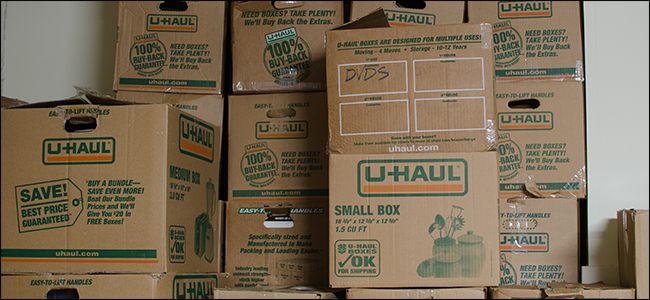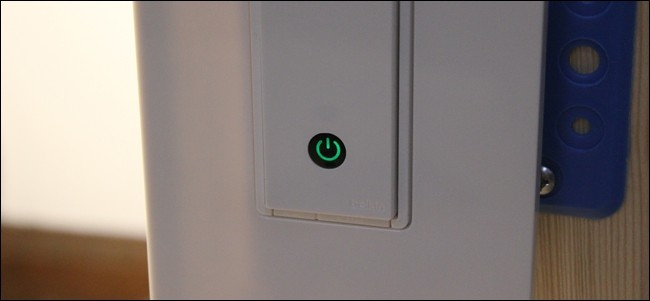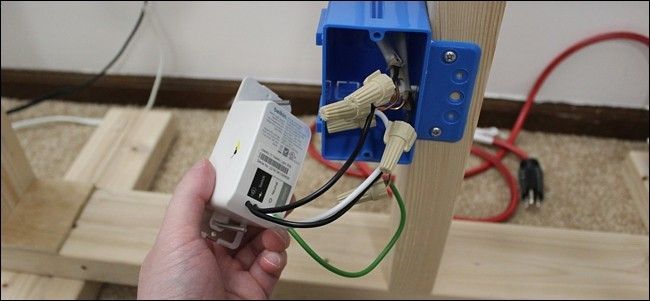Quick Links
You've decked out your house with all of the coolest smarthome products, and now you're moving. What should you do with all those sweet smarthome gadgets?
It's easy to get comfortable and settle down in a new house (and you should!), but there's always the possibility of moving in the future---even if you think you're in your forever home. If you ever do decide to move, there are a whole host of things you have to do, but what about all your smarthome gear? There are a couple options at your disposal, as well as some things to keep in mind for the future.
Leave The Gear and Use It As a Negotiating Tool
Smarthome devices are expensive, and if you've decked out your entire house with all sorts of fun smarthome toys, that's thousands of dollars of extra value added onto your house, which can make for a great negotiating tool when it comes time to sell.
Of course, it really depends on the buyer and whether or not they're even interested in smarthome devices in the first place. But if so, you may have the upper hand when it comes time to negotiate the final price for your crib, and there are several different ways you can handle it.
The easiest way would be to negotiate a specific amount of cash that you would want from the seller in exchange for all your smarthome gear, or you could just include it in the price of the house. Be prepared to provide an itemized list of every smarthome device, and don't be surprised if the buyer wants to negotiate each device one by one.
Keep in mind, though, that using your smarthome devices as a negotiating tool really only works if the buyer is even interested in all that stuff in the first place. If you have a buyer who could care less, you either have to take the loss or just uninstall everything and bring it with you to your new house.
Take It All With You
The last thing you probably want to think about when selling your house is taking the time to undo all that hard work that you did installing your smarthome devices, but if you couldn't come up with an agreement with the seller, it's probably for the best.
If you do this, you'll still want to talk to the buyer about whether it'll be your responsibility or their's to replace any of the smarthome devices with their dumbhome counterparts. Switching back to regular light switches or thermostats are a good example of this.
Again, there are several ways you could negotiate this, such as having the buyer pay for the replacements and time to replace them, or just leaving it all bare for the buyer to take care of themselves. Do be aware, though, that in some area, it's the seller's responsibility to fix anything that is considered attached to the home. Leaving a heating and cooling system without a working thermostat might just not fly.
Always Have an Exit Strategy In Mind
When it all comes down to it, it's best to always keep the future in mind and assume that you may have to uninstall some of your smarthome devices down the road.
When my wife and I were shopping for our first house, our real estate agent always told us to have an "exit strategy." That is, since it's our first house, it probably won't be our last, so it's important that we do things to the house to improve its resale value once we decide to move on to a better house in the future.
The same can be said when you're installing all your smarthome devices, albeit in a different sense. For example, when you're installing your smart thermostat, smart light switches, or anything else for that matter, always ask yourself questions like: "How can I make it easier for myself or the next homeowner when this might need to be uninstalled?"
And if you're drilling holes into the wall to run cable for cameras or other stuff, it's always a good idea to keep it as clean and up to code as possible in case you or the future owner of the house decides to remove any of those things---the last thing you want to do is scramble to fix a mess you created in order appease the inspector when you sell your house.
It's also probably a good idea to save any of the old components---like dumb switches or thermostats---so that you can reinstall them in the future rather than buying new ones.
Make Things Easier for Yourself from the Start
I know it can be tempting to change out all of your light switches with nifty smart versions and run hardwired security cameras all over your house, but there are other options out there that are easier to install (and uninstall if that time comes).
For example, instead of wiring up smart light switches, you can opt for smart bulbs instead. They're as easy to change out as a screwing in a light bulb---literally. They can be a bit more expensive than smart light switches, but when it comes time to move, it's a lot less work you'll have to do.
You can also use battery-powered security cameras instead of running power cables all over the place. Netgear's Arlo Pro system is a great choice and the battery lasts a solid few months on a single charge.
In the end, it's up to you how you want to put together your smarthome, and a lot of it depends on how handy you are with certain tasks (like wiring and various DIY stuff). Just keep in mind that you may not be living in that same house forever, and think about how your smarthome gear could be affected when it comes time to move out.




